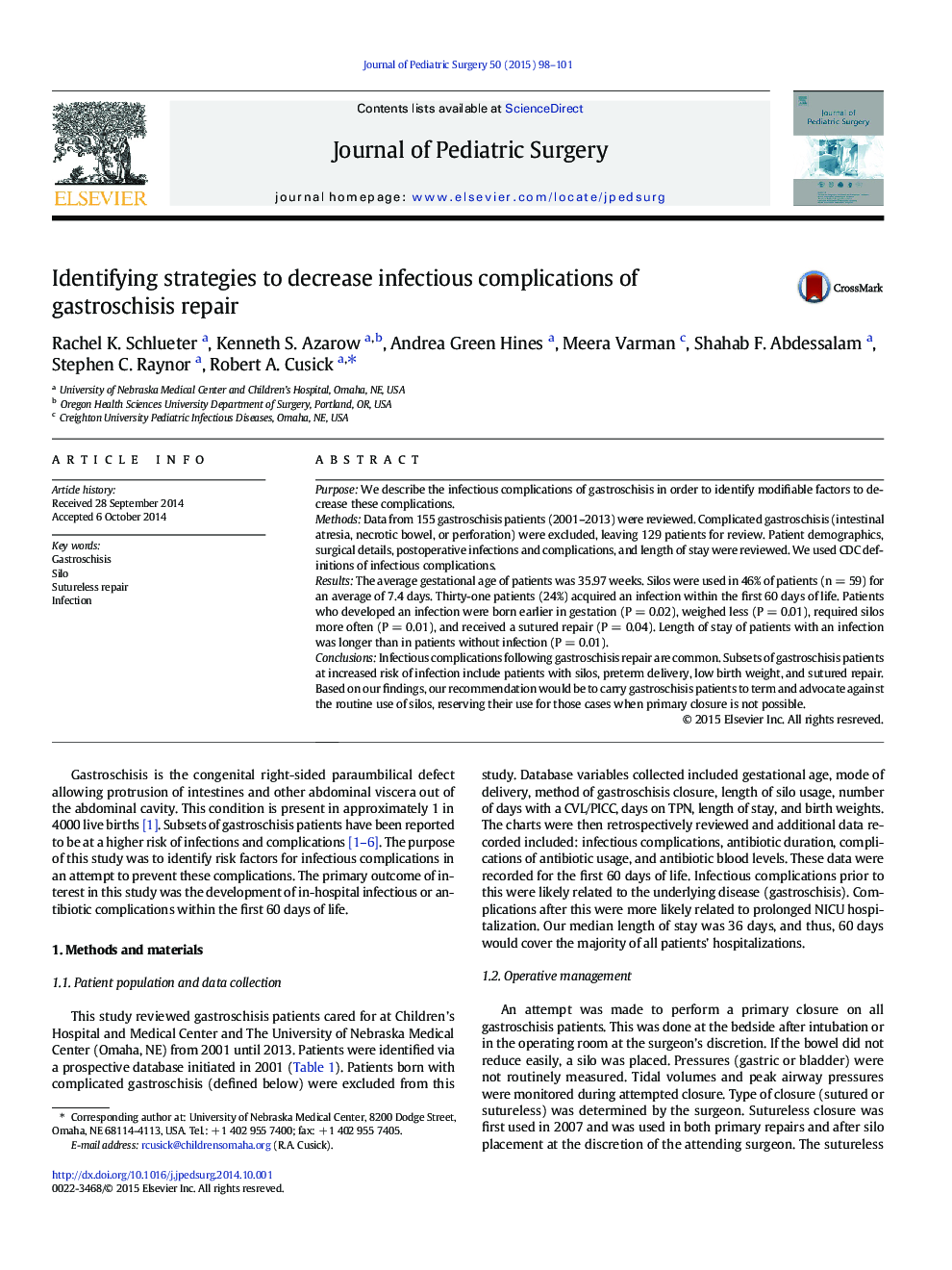| Article ID | Journal | Published Year | Pages | File Type |
|---|---|---|---|---|
| 4155209 | Journal of Pediatric Surgery | 2015 | 4 Pages |
PurposeWe describe the infectious complications of gastroschisis in order to identify modifiable factors to decrease these complications.MethodsData from 155 gastroschisis patients (2001–2013) were reviewed. Complicated gastroschisis (intestinal atresia, necrotic bowel, or perforation) were excluded, leaving 129 patients for review. Patient demographics, surgical details, postoperative infections and complications, and length of stay were reviewed. We used CDC definitions of infectious complications.ResultsThe average gestational age of patients was 35.97 weeks. Silos were used in 46% of patients (n = 59) for an average of 7.4 days. Thirty-one patients (24%) acquired an infection within the first 60 days of life. Patients who developed an infection were born earlier in gestation (P = 0.02), weighed less (P = 0.01), required silos more often (P = 0.01), and received a sutured repair (P = 0.04). Length of stay of patients with an infection was longer than in patients without infection (P = 0.01).ConclusionsInfectious complications following gastroschisis repair are common. Subsets of gastroschisis patients at increased risk of infection include patients with silos, preterm delivery, low birth weight, and sutured repair. Based on our findings, our recommendation would be to carry gastroschisis patients to term and advocate against the routine use of silos, reserving their use for those cases when primary closure is not possible.
